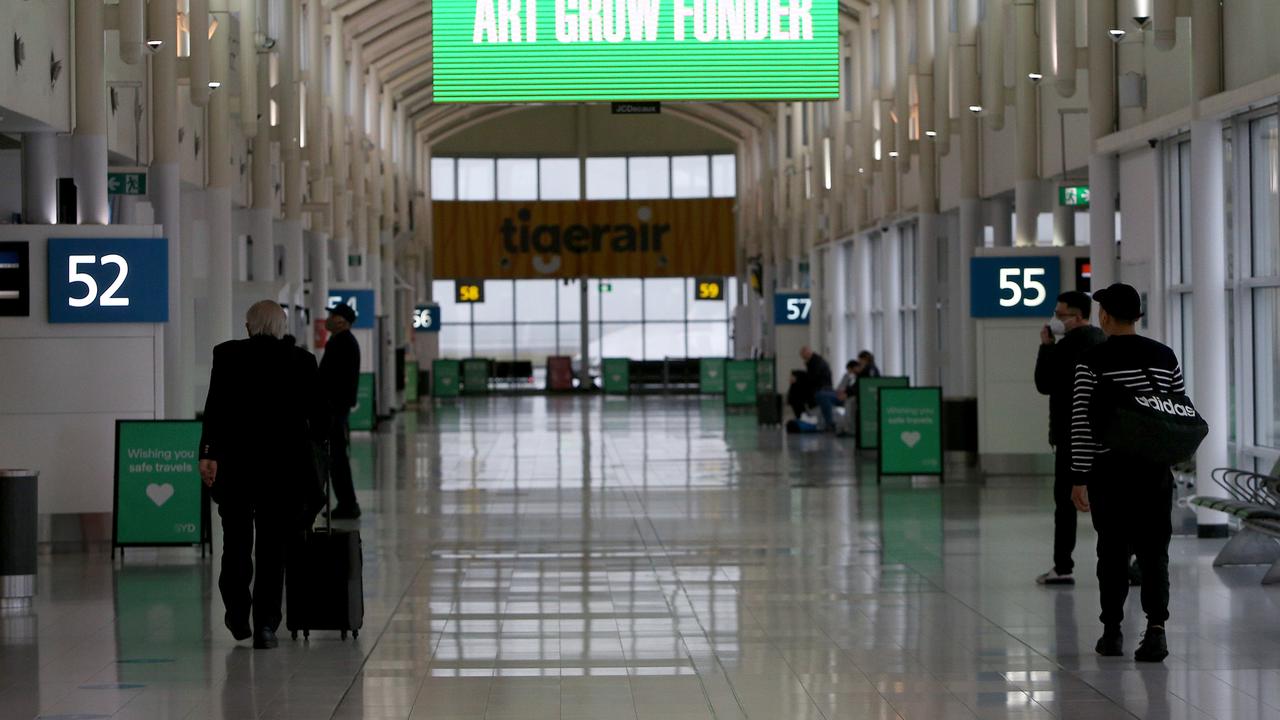Terry McCrann: Forget about pre-Global Financial Crisis highs
THE Australian share market has probably hit a brick wall at 6000 or so on the index. This is partly because the “Trump Surge” has run out of puff on Wall St, writes Terry McCrann.

Terry McCrann
Don't miss out on the headlines from Terry McCrann. Followed categories will be added to My News.
THE Australian share market has probably hit a brick wall at 6000 or so on the index. This is partly because the “Trump Surge” has run out of puff on Wall St. But it’s also because of our own “local factors” — principally what’s happening in the property market and to bank lending, and to the big resource stocks like BHP Billiton.
This is why predictions like those we are now seeing, that the market will “certainly” shoot through 6000 for the first time in nearly 10 years, aren’t particularly helpful.
It might or might not go through that specific point. If I had to punt, I’d say there’s a fair, 50-50 chance it just won’t make it. The all ords has come closest, closing at 5968 on Wednesday before dropping to 5926 points on Thursday. The 200 index has tracked a little lower, closing at 5890.
But even if either or both indexes did manage to pierce 6000, the far more important question is where would they go after that? My substantive point is that they would likely go straight back below 6000.
They are certainly not going to get anywhere near our pre-GFC highs, just shy of 7000.
This will continue to leave our market as the only major world market which failed to at least get back to its pre-GFC high; and in most cases then go way higher.

The US market, most spectacularly (and in my view, also shamefully), not only rather quickly reclaimed its pre-GFC high (“proving” the old theory that share markets always come back after crashes), but subsequently went almost 50 per cent above it. And is still trading almost as high.
The primary reason why all other world markets soared and we didn’t is interest rates. And money printing.
“Everyone else” cut their official interest rates to zero; our Reserve Bank only went down to 1.5 per cent and then only recently. The other major central banks also printed money with their multi-trillion dollar/euro/yen QE or Quantitative Easing programs.
Share prices are always directly linked to rates. Rates go up, share prices go down.
Rates go down, share prices go up.
And when rates go down all the way to zero — and in some cases, into the negatives — and you get money printing, share prices don’t just go up, they rocket. So, also, do property prices.
What the Fed and other central banks did was to make already rich people — who owned shares and property — even richer, fabulously richer. Meanwhile, middle-income wage and salary earners were being shredded.
This dynamic has now at least ended. The Fed is — belatedly and very tentatively — starting to move US rates up, although it will take a long time to get them back to “normal”.
This should have “capped” the US market; and so via the flow-on impact, most markets around the world as well. Except for Donald Trump.
His election electrified both business and consumer confidence in the US. For the four months to early March we had the “Trump Surge” on Wall St, taking the market nearly 15 per cent above its already all-time high.

That has now run out of steam. Partly because it’s added so much “value” to share prices. But also because Trump is running into reality: economic, legislative and geopolitical.
My bet is Wall St now goes at best sideways and more likely drifts south. That pulls one — big — prop from our market. Now add the “local factors”.
They are, broadly: banks putting up mortgage interest rates, cutting back on their lending, the end of the mini-resources boom (soaring iron ore prices), the peaking of “health stocks” (both China-linked and otherwise) and
the fact that there ain’t much else in the market.
Telstra getting TPG-whacked and the big-two retailers embarking on very long term challenges also doesn’t help.
Put another way, we need a few “Apples and Googles”; we don’t and never will have them. In short, the market ain’t going to 7000. It would be great if it held on to 6000. I’m extremely, extremely dubious.
There’s a whole big separate question of what exactly is happening to the economy.
On the one hand, we continue to see specific closures, with businesses going broke, workers losing their jobs. Yet Thursday’s jobs numbers showed an unbelievable leap in jobs.
It was, literally, unbelievable: one month’s statistical garbage out. But the longer trend is not signalling disaster. Yet it’s hard to see what’s actually positively driving the economy.
The next three months or so are going to be crucial in finding out the answer.
Originally published as Terry McCrann: Forget about pre-Global Financial Crisis highs


